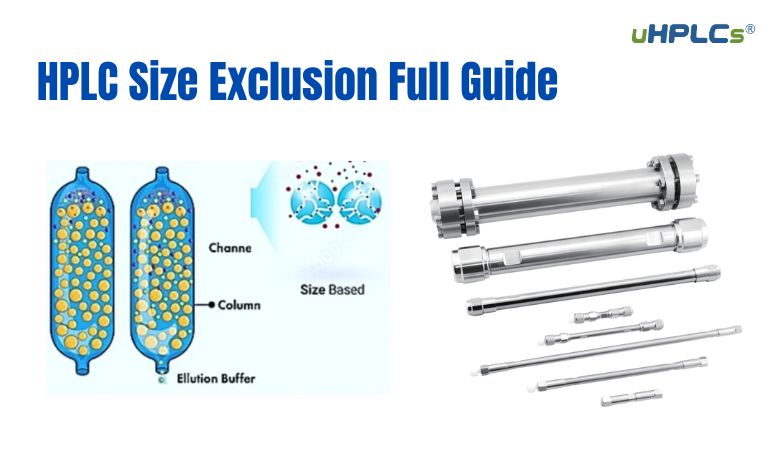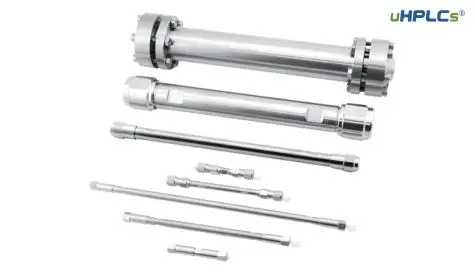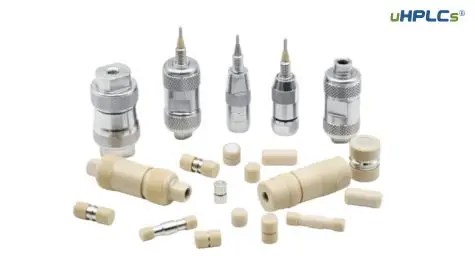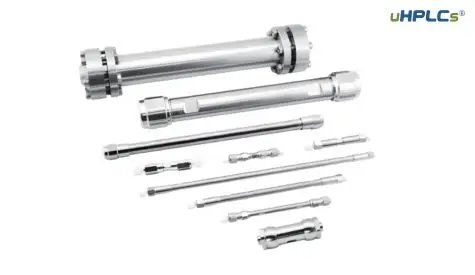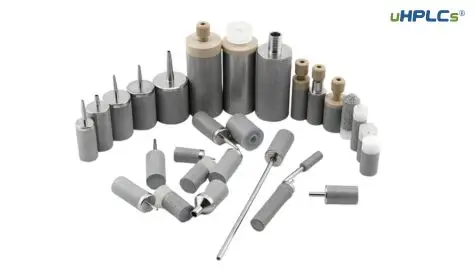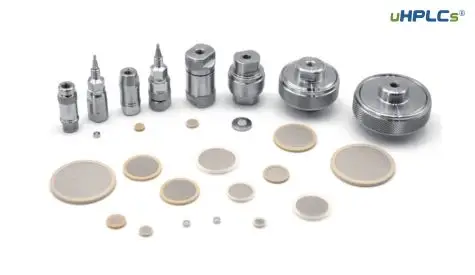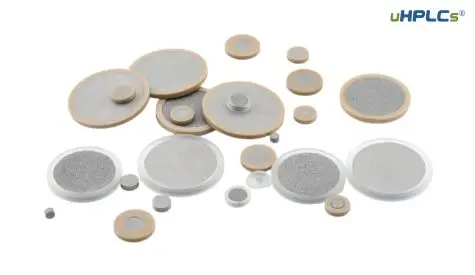HPLC Size Exclusion is one of special and important HPLC Column, so today, we gather all knowledge of Size Exclusion HPLC Column Most People Want to Know, Hope You Also can Get More details.
What is Size Exclusion Chromatography (SEC)?
Size Exclusion Chromatography (SEC): A Technique Within HPLC
Size Exclusion Chromatography (SEC) is a type of HPLC that separates components based on their size or molecular weight. The stationary phase consists of porous particles with a specific pore size distribution. Larger molecules are unable to enter the pores and pass through the column more quickly, while smaller molecules can enter the pores and are retained longer.
Principles of SEC
The principle behind SEC is simple:
- Molecular sieving: The stationary phase acts as a molecular sieve. Larger molecules are unable to enter the pores of the stationary phase and pass through the column more quickly. Smaller molecules can enter the pores and are retained longer.
- Retention time: The retention time of a molecule in SEC is directly related to its size. Larger molecules have shorter retention times, while smaller molecules have longer retention times.
How SEC Separates Molecules Based on Size
- Sample injection: The sample is injected onto the column.
- Separation: As the sample passes through the column, the molecules interact with the stationary phase. Larger molecules cannot enter the pores and pass through quickly. Smaller molecules can enter the pores and are retained longer.
- Elution: The separated components are eluted from the column and detected.
Key advantages of SEC include:
- Non-destructive: SEC does not chemically alter the analytes, making it suitable for studying sensitive compounds.
- Rapid analysis: SEC provides relatively quick separation times, making it efficient for routine analysis.
- Wide applicability: SEC can be used to analyze a variety of molecules, including polymers, proteins, and carbohydrates.
In summary, HPLC is a powerful analytical tool with broad applications, and SEC is a specific technique within HPLC that is particularly useful for separating components based on their size.
In summary, SEC is a technique that utilizes the size of molecules to separate them. Larger molecules are eluted first, followed by smaller molecules. This makes SEC a valuable tool for determining the molecular weight distribution of polymers, proteins, and other macromolecules.
Types of Size Exclusion Columns
Size exclusion columns are classified into two main types based on the solvent used:
Aqueous Size Exclusion/Gel Filtration Chromatography (GFC)
- Materials used: Agarose, dextran, and polyacrylamide are commonly used stationary phases for GFC. These materials are hydrophilic and form gels that have specific pore sizes.
- Common applications:
- Protein separation: GFC is widely used to separate proteins based on their molecular weight.
- Desalting: GFC can be used to remove salts and other small molecules from protein solutions.
- Purification of biological molecules: GFC is used to purify various biological molecules, such as nucleic acids and enzymes.
Non-Aqueous Size Exclusion/Gel Permeation Chromatography (GPC)
- Materials and solvents used: Polystyrene is a common stationary phase for GPC. Organic solvents, such as tetrahydrofuran (THF), are used as the mobile phase.
- Typical applications:
- Polymer characterization: GPC is used to determine the molecular weight distribution of polymers, such as polyethylene, polystyrene, and polyvinyl chloride.
- Separation of oligomers: GPC can be used to separate oligomers of different sizes.
- Analysis of synthetic polymers: GPC is used to analyze the composition and structure of synthetic polymers.
In summary, the choice of column type depends on the nature of the sample and the desired separation. GFC is suitable for aqueous samples, while GPC is used for non-aqueous samples.
How Size Exclusion Chromatography Works
Size exclusion chromatography (SEC) separates molecules based on their size or molecular weight. The separation process involves the interaction between the sample molecules and the stationary and mobile phases.
The Role of the Stationary and Mobile Phases
- Stationary phase: The stationary phase is a porous material with a specific pore size distribution. It acts as a molecular sieve, allowing smaller molecules to enter the pores and larger molecules to be excluded.
- Mobile phase: The mobile phase is a liquid that carries the sample through the column. It does not interact with the stationary phase or the sample molecules, but it plays a crucial role in transporting the molecules through the column.
Mechanism of Separation
- Larger molecules: Larger molecules are unable to enter the pores of the stationary phase. They pass through the column more quickly, eluting first.
- Smaller molecules: Smaller molecules can enter the pores of the stationary phase and are retained longer. They spend more time interacting with the stationary phase and elute later.
In essence, SEC separates molecules based on their ability to enter the pores of the stationary phase. Larger molecules are excluded, while smaller molecules are retained. This separation mechanism is independent of the chemical properties of the molecules, making SEC a valuable technique for analyzing a wide range of compounds.
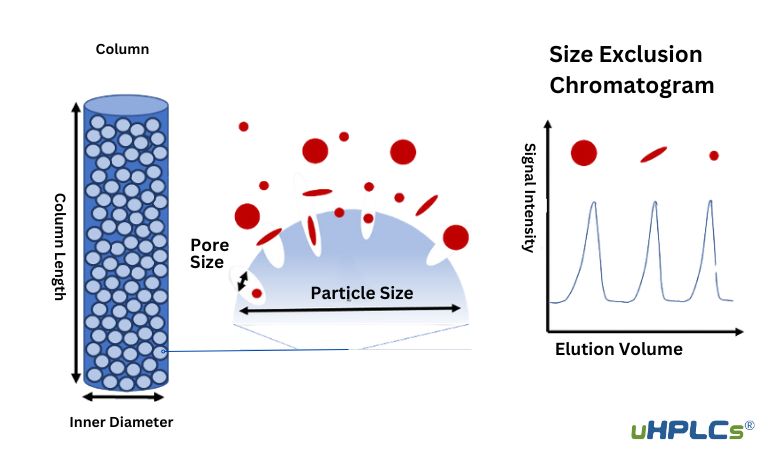
Applications of Size Exclusion Chromatography (SEC)
SEC is a versatile technique with a wide range of applications across various fields. Here are some of its most common uses:
Biopharmaceutical Analysis
- Protein analysis: SEC is used to determine the molecular weight and purity of proteins. It can also be used to study protein aggregation and interactions.
- Antibody analysis: SEC is used to analyze the molecular weight and purity of antibodies, which are important biopharmaceutical products.
- Biomolecule purification: SEC can be used to purify biomolecules, such as enzymes and nucleic acids, from complex mixtures.
Polymer Characterization
- Molecular weight determination: SEC is used to determine the molecular weight distribution of polymers, which is crucial for understanding their physical and mechanical properties.
- Polymer analysis: SEC can be used to analyze the composition and structure of polymers, such as copolymers and branched polymers.
- Polymer degradation: SEC can be used to study the degradation of polymers over time.
Separation of Oligonucleotides and Nucleic Acids
- Oligonucleotide analysis: SEC can be used to separate and analyze oligonucleotides, which are short chains of nucleotides.
- Nucleic acid purification: SEC can be used to purify nucleic acids, such as DNA and RNA, from biological samples.
- Fragmentation analysis: SEC can be used to analyze the fragmentation of nucleic acids, which is important for studying DNA damage and repair.
In summary, SEC is a valuable tool for analyzing a wide range of molecules, from proteins and polymers to nucleic acids. Its ability to separate molecules based on their size makes it a powerful technique in various fields, including biopharmaceuticals, materials science, and biotechnology.
Factors Affecting SEC Performance
Several factors can influence the performance of a size exclusion chromatography (SEC) experiment. These factors include:
Column Dimensions and Packing
- Column length: Longer columns provide better resolution, but they also increase analysis time.
- Column diameter: A larger column diameter allows for larger sample volumes, but it may also reduce resolution.
- Packing material: The type, size, and distribution of the packing material in the column affect the pore size distribution and, consequently, the separation efficiency.
Flow Rate
- Resolution: A slower flow rate generally leads to better resolution, as it allows for more interaction between the sample molecules and the stationary phase.
- Analysis time: A higher flow rate reduces analysis time but may compromise resolution.
Sample Volume and Concentration
- Sample volume: Overloading the column with too much sample can lead to poor resolution and peak broadening.
- Concentration: High sample concentrations can also affect resolution, especially if the sample molecules interact with each other.
In summary, optimizing the column dimensions, packing, flow rate, sample volume, and concentration is essential for achieving optimal SEC performance. By carefully considering these factors, analysts can ensure accurate and reproducible results.
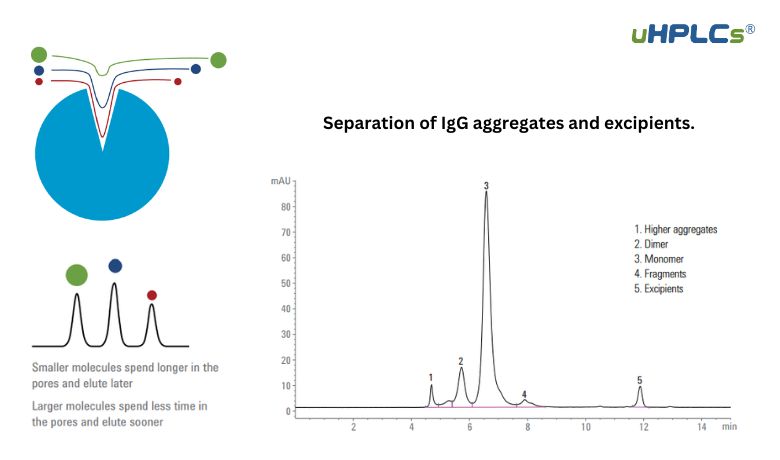
Sample Preparation for SEC
Proper sample preparation is crucial for obtaining accurate and reliable results in size exclusion chromatography (SEC). Here are some tips and guidelines:
Tips for Preparing Samples
- Dissolve the sample: Ensure that the sample is completely dissolved in a suitable solvent. The solvent should be compatible with the stationary phase and should not interact with the sample molecules in a way that affects their separation.
- Filter the sample: Remove any particulate matter or insoluble impurities from the sample by filtering it through a suitable membrane. This will help prevent clogging of the column and improve separation efficiency.
- Adjust the sample concentration: The sample concentration should be appropriate for the column and detector being used. Too high a concentration can lead to overloading, while too low a concentration may result in poor signal-to-noise ratios.
- Consider sample compatibility: Ensure that the sample is compatible with the stationary phase and mobile phase. Some samples may interact with the stationary phase in a way that affects their separation, leading to inaccurate results.
Common Pitfalls and How to Avoid Them
- Overloading: Overloading the column with too much sample can result in poor resolution and peak broadening. To avoid overloading, reduce the sample volume or use a larger column.
- Incompatibility: If the sample is incompatible with the stationary phase or mobile phase, it can lead to poor separation or even irreversible adsorption of the sample. To avoid this, carefully select the stationary phase and mobile phase based on the properties of the sample.
- Contamination: Contamination of the sample with impurities can affect the separation and lead to inaccurate results. To avoid contamination, use clean glassware and reagents, and handle samples carefully.
- Incorrect sample preparation: Failure to follow proper sample preparation procedures can also lead to poor results. Ensure that the sample is dissolved completely, filtered, and prepared at the appropriate concentration.
By following these guidelines and avoiding common pitfalls, you can ensure that your samples are adequately prepared for SEC analysis and obtain reliable results.
Troubleshooting Common SEC Issues
Size exclusion chromatography (SEC) can sometimes encounter challenges that can affect the quality of the results. Here are some common issues and potential solutions:
Tailing Peaks
- Cause: Overloading, poor column packing, or interactions between the sample and the stationary phase.
- Solutions:
- Reduce the sample volume or concentration.
- Ensure proper column packing.
- Try a different stationary phase or mobile phase.
Poor Resolution
- Cause: Overloading, incorrect flow rate, or inadequate column dimensions.
- Solutions:
- Reduce the sample volume or concentration.
- Adjust the flow rate.
- Use a longer or narrower column.
Unexpected Retention Times
- Cause: Interactions between the sample and the stationary phase, or changes in the mobile phase composition.
- Solutions:
- Try a different stationary phase or mobile phase.
- Ensure that the mobile phase composition is consistent.
- Check for any changes in the column temperature or pressure.
Other Common Issues and Solutions:
- Clogged column: If the column becomes clogged, it can lead to poor resolution and increased backpressure. Clean the column or replace it if necessary.
- Air bubbles in the system: Air bubbles can interfere with the flow of the mobile phase and cause peak broadening. Degas the mobile phase and ensure that the system is free of air bubbles.
- Detector sensitivity: If the detector is not sensitive enough, it may be difficult to detect low-concentration samples. Adjust the detector settings or use a more sensitive detector.
By addressing these common issues and following best practices, you can improve the performance of your SEC experiments and obtain reliable results.
FAQs About HPLC Size Exclusion
1.What is the difference between gel filtration chromatography (GFC) and gel permeation chromatography (GPC)?
GFC typically uses aqueous solutions and is often used for biomolecules like proteins, while GPC uses non-aqueous solvents to analyze polymers and smaller organic molecules.
2.What types of columns are used in SEC?
SEC uses columns filled with porous materials, such as agarose or polystyrene. These materials allow size-based separation while preventing smaller molecules from entering the pores.
What are the main applications of SEC?
SEC is widely used in biopharmaceuticals for protein purification, polymer characterization, and the separation of nucleic acids and oligonucleotides.
How do I prepare samples for SEC?
Sample preparation should ensure that the samples are free from particulates and adequately diluted. Avoiding high concentrations helps to prevent column clogging and ensures better resolution.
What factors can affect SEC performance?
Key factors include column dimensions, flow rate, sample volume, and the properties of the mobile phase. Each of these can influence separation efficiency and resolution.
What should I do if I encounter poor resolution in SEC?
Check for issues such as incorrect flow rate, overloaded samples, or inappropriate column dimensions. Adjusting these factors can often improve resolution.
Is SEC suitable for all types of molecules?
SEC is best for larger molecules, such as proteins and polymers. It may not be effective for very small molecules or those that do not exhibit size-based separation characteristics.
Conclusion
In summary, size exclusion chromatography (SEC) is a powerful technique for separating molecules based on size, making it invaluable in various fields, from biopharmaceuticals to polymer science. Understanding the principles, types, and applications of SEC can enhance your analytical capabilities.
For tailored advice on selecting the right SEC columns and to receive our price list, please contact uHPLCs at sales@uhplcs.com. We’re here to help you optimize your chromatography needs!

